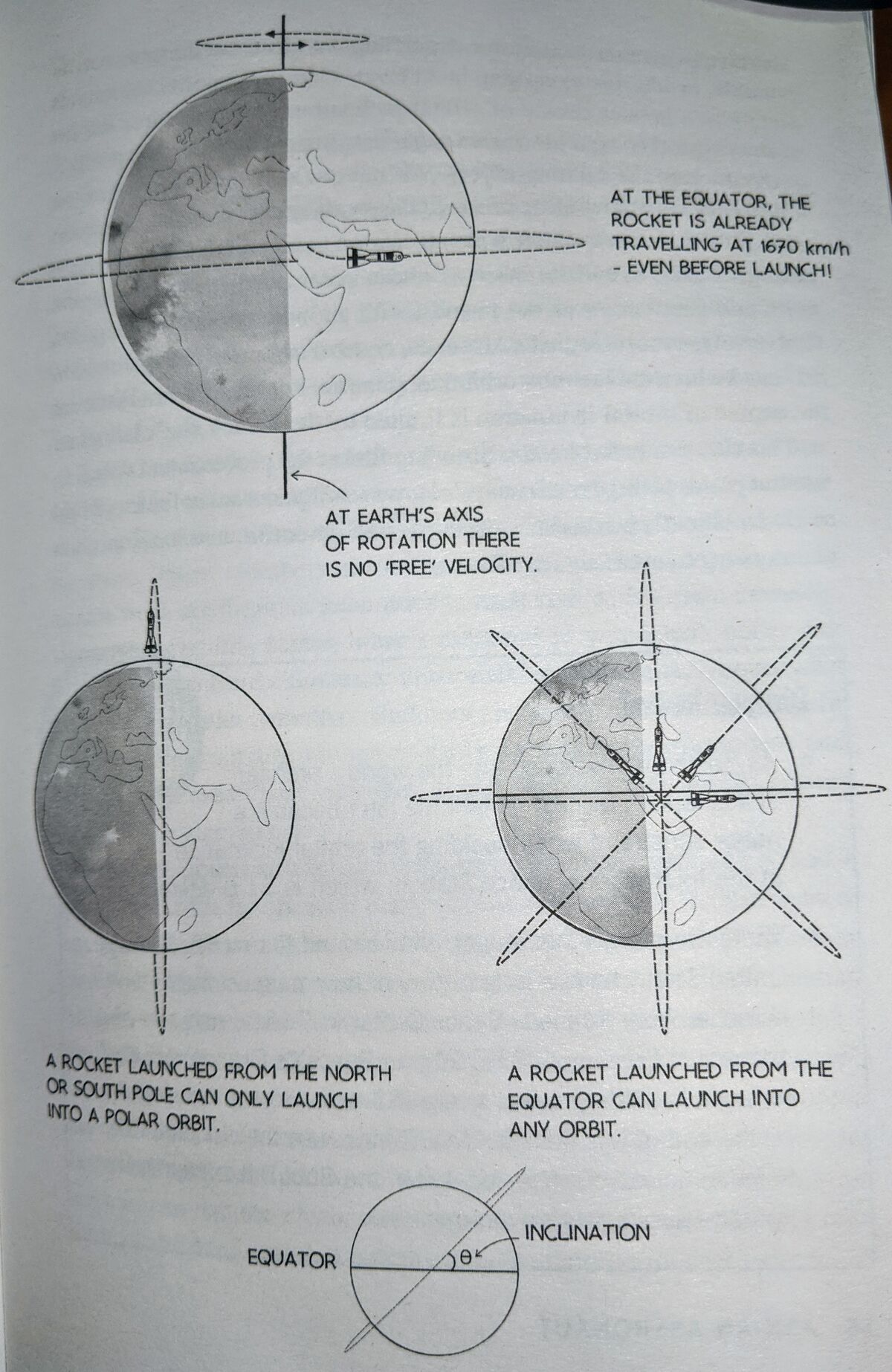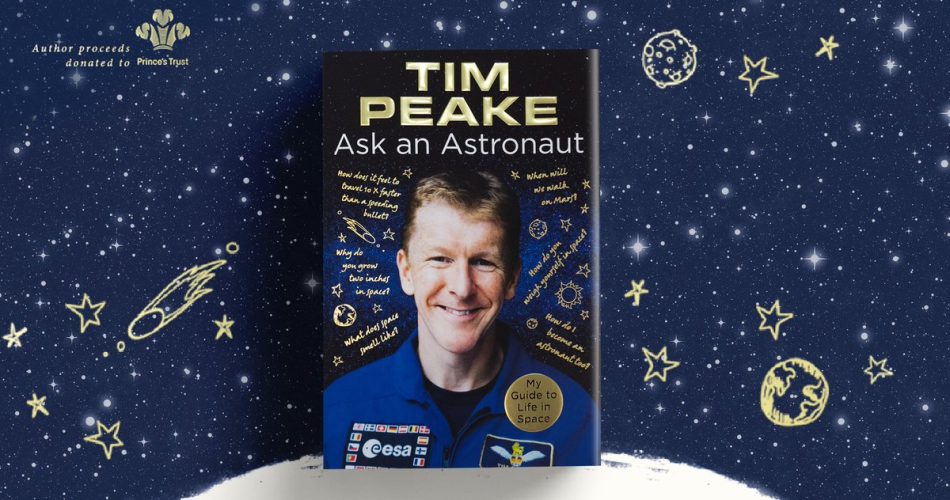Ask an Astronaut by Mr Tim Peake: This is a free-flowing book, mostly Q & A format, addressing numerous questions we may have about travelling to space, what it takes to be an astronaut, and how is life in space. I enjoyed this book a lot, gave me strong hope that humanity which has overcome odds to go to space and moon will certainly survive the current crisis and come out stronger than ever.
Mr Tim from the U.K. was an astronaut representing European Space Agency (ESA) abroad the International Space Station (ISS) for a 186-day Principia mission in 2016. If you thought that was impressive, check his earlier experiences – he was a test pilot, served in the British Army Air Corps, flown over 3000 hours and 30 different types of helicopters and aircraft, a Fellow of a number of UK science, aviation and space-based organizations.
The book is divided into various topics of being an astronaut – Launch, Training, Life and Work on the ISS, Spacewalking, Earth and Space, Return to Earth and the Future. What I liked about the book was, Tim takes time to explain in detail, handles even the awkward questions with grace, gives the background to every answer and he makes the science that’s involved easier to follow and fun – I wish our school textbooks handled science this way.

Soyuz Launch. Courtesy: Ask an Astronaut published by Arrow Books
When it comes to questions on who can be an astronaut, Tim says while most of the pioneers were Pilots and from the Armed forces, nowadays NASA and ESA are looking for skills from across disciplines as space research as expanded to numerous fields including mental wellbeing, so whatever may be your discipline if you are good at it, you can throw your hat in the ring to be an astronaut.
He spends a lot of time explaining the training he went through at ESA, NASA and finally in Russian facilities for the Soyuz capsule. He had to learn the Russian language so that they can have routine communication with the Russian engineers on the ground, with the fellow cosmonauts in the ISS, to operate the Soyuz controls and read the Soyuz manuals which are only in Russian. I found it interesting that ESA sends their astronauts on a week-long camp inside a vast cave network, this is done to develop inter-personal skills to work as a team. Overall, an astronaut typically would be undergoing over 3 to 4 years of training after being selected for the assignment. They even learn to fly a jet-pack!

Rocket launched from the Equator can launch into any orbit. Courtesy: Ask an Astronaut published by Arrow Books
When he talks about the morning activities before launch, it seems it takes five minutes just to put on the underwear that goes with the (Russian) Sokol spacesuit. The spacesuits are tailored to each astronaut! The pathway to space is littered with indignities, such as sigmoidoscopies, endoscope, enemas and no end of prodding and poking. One of the many wonderful (and sometimes weird) traditions that the Russians follow, before launch, is to have a pee en route to the launch pad. The Soyuz has an onboard computer named Argon-16 that has a processor speed of 200kHz, 6 KB RAM, 48 KB ROM, weighs 70 kg and was in service for three decades. The ISS is orbiting around the earth at an altitude of 400 km above sea level. It used to take just over two days (34 orbits of planet Earth, to be exact) to get to the ISS, nowadays it takes just six hours after launch.
He says the main culprits for causing dizziness (or vertigo) when travelling to space or anywhere fast are our ears. On Earth, our inner ear uses fluid (endolymph) in our semicircular canal to detect rotations of our head. Now, if we inject microgravity – suddenly the endolymph is in freefall and the otoliths have no gravity vector. However, the brain is brilliant at adapting to new environments. In my case, I felt that once my body learnt to ignore the confusing signals coming from my vestibular system, life was great.
He describes ISS to be the most advanced human-made structure ever built, it is a cutting-edge science laboratory, a six-bedroom house, has two bathrooms (no shower), a gym and has 820 cubic metres (about the same as Boeing 747-400 ‘Jumbo Jet’). Construction started in November 1998 and has been permanently occupied since November 2000. I found his description of the robotic arm in ISS, known as the Space Station Remote Manipulator System (SSRMS) that helps in grappling and moving modules or moving astronauts during spacewalks to be one of the fascinating pieces of technology that Tim describes.
He talks a lot about the food on ISS – most food there is either irradiated, dehydrated, canned or “off-the-shelf” dry goods, space food is generally fairly bland, but they do get special treats (bonus foods) once-in-a-while. Astronauts do get a heavenly view of the planet below from a 360-degree viewing gallery called Cupola in the ISS, but a typical day onboard is packed for an astronaut (normal 12-hour workday from 7 a.m. to 7 p.m.) with hygiene activities, exercise, science experiments, communication with the ground station, routine maintenance tasks, repairing, cleaning, housekeeping, recording talks to school children or hosting events from space, running students code on Rasperry Pi’s space-hardened ‘Astro Pi’ computer, and, even a spacewalk on some days which are rehearsed extensively.
After food, Tim answers in detail questions about how do you go to the toilet in space – the peeing happens into a hose that has a conical-shaped receptacle with a switch on the side (the most important thing to remember is to first turn the switch, which operates a fan), for No. 2 there is a rather petite loo seat secured on top of a solid-waste container, on successful completion of business, astronauts drop the (self-sealing) rubberised bag with its contents into the container and leave a fresh bag in place for the next crew member. There are two toilets in the space station – one on the Zvezda module of the Russian segment and one in Node 3 (Tranquility) of the US segment. Waste (including the solid waste described above) from the space station is loaded onto one of the resupply spacecraft that will undock at the end of its mission and burn up in Earth’s atmosphere.
While it comes to resting, Astronauts sleep on a close-fitting sleeping bag, that some astronauts prefer to be strapped securely to a wall in their crew quarter, and others elect to be completely detached and float around all night! They do get reading materials (e-books), podcasts, news articles, music files, TV programmes via the communications data link-up to the space station if requested, and, even have access to movies pre-stored on a 1TB hard drive on the ISS. Tim mentions watching and liking Gravity (2013).

Training modules. Courtesy: Ask an Astronaut published by Arrow Books
One of the topics I found very interesting is the section where Tim talks about the real benefits of research done in space:
- Protein Structures: Our body contains tens of thousands of different proteins. Researchers have found that it is easier to grow high-quality protein crystals in weightlessness, where they form more slowly.
- Vaccine development: The space environment causes a multitude of changes in microbial cells, such as alterations of microbial growth rates, antibiotic resistance, microbial invasion of host tissue and even genetic changes within the microbe. One change due to microgravity, which is of particular interest in terms of studying infectious diseases, is virulence (the ability of a microbe to cause diseases). Scientists have been able to use microgravity to identity those viral strains that are least potent, which are then selected as candidates for use in vaccine development on Earth.
- Ageing Process: Rapid changes that occur to the human body as it adapts to microgravity provide a unique model to study the ageing process (without the actual complexity of age!)
- Metal alloys: In space, the absence of convection and sedimentation due to gravity, allows scientists to control solidification, and improve ground-based metal casting, leading to new, stronger, lightweight materials.
- Cold plasma: Plasma is one of the four fundamental states of matter – the others being solid, liquid and gas. A plasma is an electrically charged gas, a bit like lightning, which rarely occurs on Earth. In contrast, 99 per cent of the visible matter in space is in the plasma state.
- Microencapsulation: Imagine filling a tiny, biodegradable micro-balloon (about the size of a red blood cell) with various drug solutions that can be injected into the bloodstream to fight disease. The ISS was vital to the development of these microcapsules because microgravity enables dissimilar liquids (such as oil and water) to disperse evenly throughout a globule.
It was reassuring to learn that all astronauts are trained to a very high level in first aid. In addition, there are always two Crew Medical Officers (CMOs) on board, who can also deal with basic surgical and dental procedures, such as suturing or filling/removing teeth. Then there is Internet access for personal use in space, but the speed is painfully slow. The crew quarters contained two laptops, one was connected to the ‘operations network’ and the second laptop connected to a ‘crew support network’ to access the Internet and for ‘live’ posting on Twitter and Facebook. I was surprised to read that Tim had completed the London Marathon in space, connected to a harness system to the treadmill, in 3 hours and 35 minutes.
Answering a question on “Does space smell”, Tim says “Yes, space does smell… but exactly what it smells of is much harder to put your nose on. The mystery scent is the topic of much light-hearted debate among astronauts. Actually what you’re most likely smelling with static electricity is ozone. Perhaps, the most wistful theory is that the smell of space is the leftover aroma of dying stars”
In the later chapters, Tim talks about his experience of doing a spacewalk, the incredible journey of returning from ISS to the Earth, and, finally his reverse adoption to life on earth with gravity.
Lastly, for all sci-fi enthusiasts like myself, Tim answers the question of whether there was a formal protocol for ‘first contact’ with aliens. Buy the book and read the answer for yourself!
Footnote: Earlier I had written a short post wondering whether Star Trek will be relevant when we travel to other galaxies?



Comments